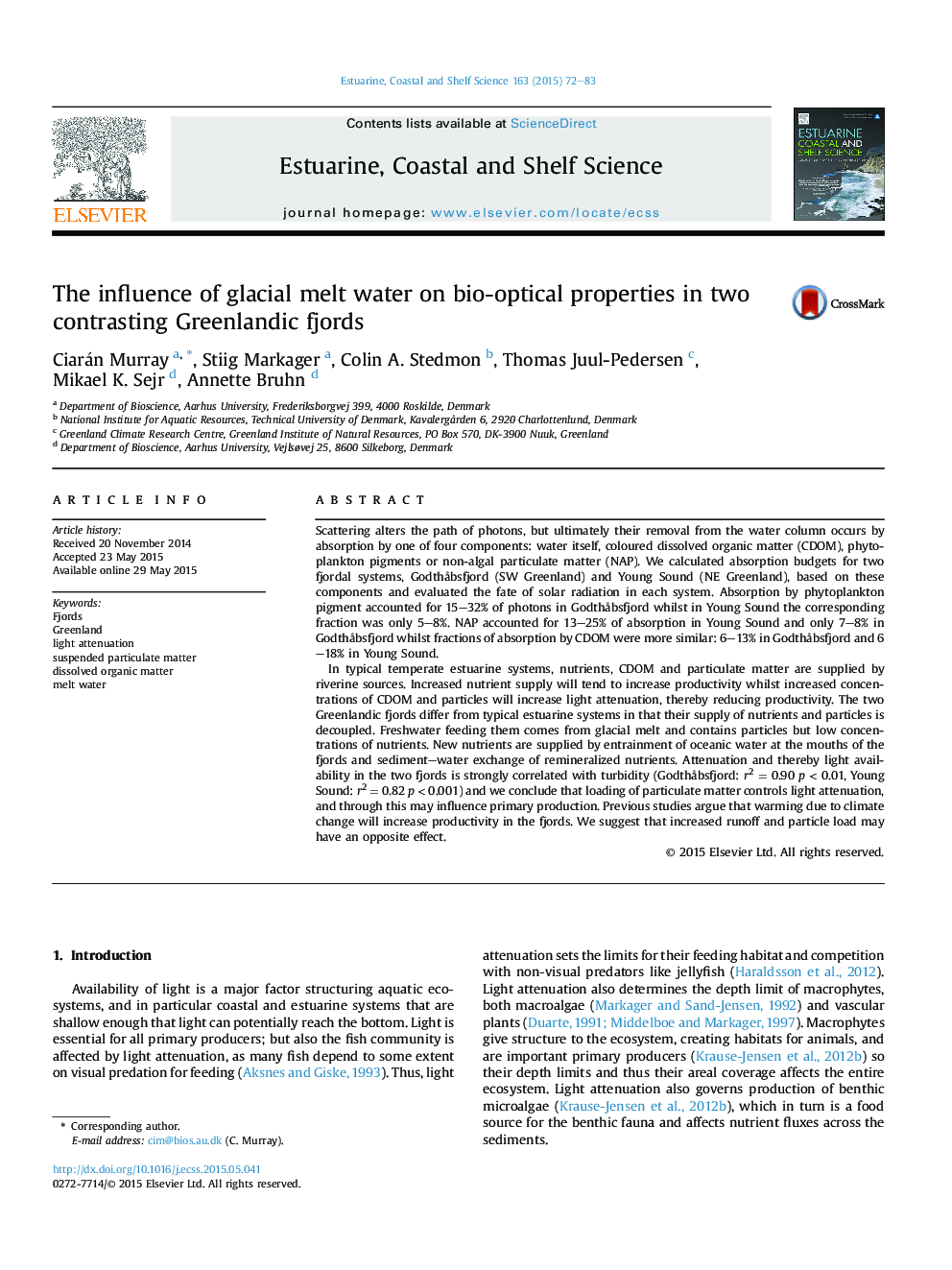| Article ID | Journal | Published Year | Pages | File Type |
|---|---|---|---|---|
| 4539396 | Estuarine, Coastal and Shelf Science | 2015 | 12 Pages |
Scattering alters the path of photons, but ultimately their removal from the water column occurs by absorption by one of four components: water itself, coloured dissolved organic matter (CDOM), phytoplankton pigments or non-algal particulate matter (NAP). We calculated absorption budgets for two fjordal systems, Godthåbsfjord (SW Greenland) and Young Sound (NE Greenland), based on these components and evaluated the fate of solar radiation in each system. Absorption by phytoplankton pigment accounted for 15–32% of photons in Godthåbsfjord whilst in Young Sound the corresponding fraction was only 5–8%. NAP accounted for 13–25% of absorption in Young Sound and only 7–8% in Godthåbsfjord whilst fractions of absorption by CDOM were more similar: 6–13% in Godthåbsfjord and 6–18% in Young Sound.In typical temperate estuarine systems, nutrients, CDOM and particulate matter are supplied by riverine sources. Increased nutrient supply will tend to increase productivity whilst increased concentrations of CDOM and particles will increase light attenuation, thereby reducing productivity. The two Greenlandic fjords differ from typical estuarine systems in that their supply of nutrients and particles is decoupled. Freshwater feeding them comes from glacial melt and contains particles but low concentrations of nutrients. New nutrients are supplied by entrainment of oceanic water at the mouths of the fjords and sediment–water exchange of remineralized nutrients. Attenuation and thereby light availability in the two fjords is strongly correlated with turbidity (Godthåbsfjord: r2 = 0.90 p < 0.01, Young Sound: r2 = 0.82 p < 0.001) and we conclude that loading of particulate matter controls light attenuation, and through this may influence primary production. Previous studies argue that warming due to climate change will increase productivity in the fjords. We suggest that increased runoff and particle load may have an opposite effect.
